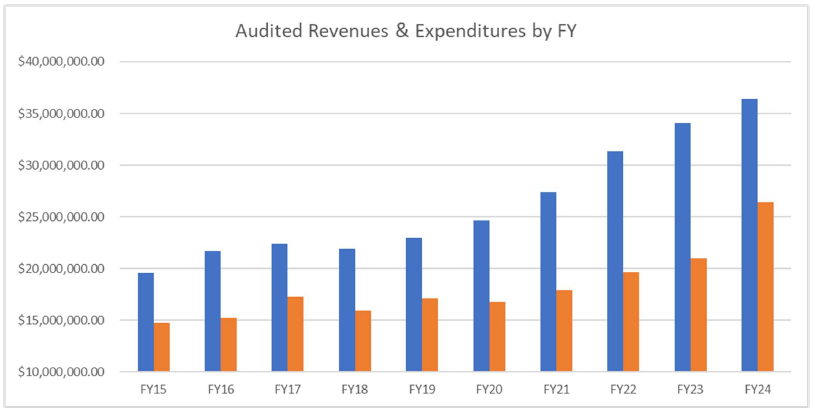Awareness Series: Domestic Violence, What is It? Part 1
Published 12:50 pm Saturday, May 2, 2009
The term “domestic violence” is often misunderstood or minimized to an excusable event. On the contrary, its definition is broad and covers multiple forms of abuse. It occurs in all cultures, races, ethnicities, religions, genders, classes, age groups and sexual orientations.
Most people do not realize how often it happens in their own community. “When I took the bench in 2005, there were so many domestic violence cases that I assigned them all to one trial docket twice a month [one in Pell City and one in Ashville]. That way the counselors, probation personnel and substance abuse councilors would be in the courtroom at the same time. It is called domestic violence court,” said District Court Judge Phil Seay.
Defining Domestic Violence
There is more to domestic violence than just a momentary lack of control. It often has a pattern in which the abuser aims to exert power and control over his partner.
The Wikipedia defines it as:
“Domestic violence (also known as domestic abuse, spousal abuse, or intimate partner violence) occurs when a family member, partner or ex-partner attempts to physically or psychologically dominate another. Domestic violence often refers to violence between spouses, or spousal abuse but can also include cohabitants and non-married intimate partners. Domestic violence is perpetrated by both men and women.”
Alabama Coalition Against Domestic Violence:
“Domestic violence is a deliberate pattern of abusive tactics used by one partner in an intimate relationship to obtain and maintain power and control over the other person.”
Local Outreach
In 2008, the YWCA Central Alabama’s Pell City office provided legal advocacy to 1,174 victims and responded to 386 calls from victims in St. Clair and Blount counties. They determined that the “need for a shelter was dire.” The property has been purchased and is currently under renovation. It is scheduled to open this summer.
YWCA board member Jenny Gauld who leading the project said, “We know the need is here in St. Clair County and we know that is very difficult for women to travel Birmingham [to receive shelter and services]. We felt the need here St. Clair County was great so we brought it here.”
St. Clair County domestic violence cases appear on the district court docket often. Assistant District Attorney Joey Stevens said, “In district court, we have these cases almost every time we have a docket. There are some cases that we see with regularity. It is not unusual to see the same family more than once.”
Forms of Abuse
Many people think domestic violence is about anger but it is more about control of the other person and power over them. Yes, anger does play a role when it escalates into violence often resulting in unwanted physical contact, rape and even murder. But there is also indirect physical violence that can include threats, striking, destruction of objects, throwing objects near the victim or harm to pets. It often includes mental or emotional abuse including threats of violence to the victim, the perpetrator and even children. Other verbal abuses include insults, put-downs and name-calling.
Many tactics can be used to gain control.
Denial and blame is where the abuser denies the abuse and shifts the blame of the behavior onto the victim.
Intimidation is another form where the abuser gives a certain look or uses actions or gestures to instill fear. This can include anything from raising a fist to a display of weapons. It often includes breaking items and pet abuse.
Threats may be made to harm other family members, pets, children or themselves.
Often abuser makes all of the major decisions in the family and defines the role of others in the household often treating them like servants or possessions. Some victims may be required to ask permission before leaving the house. The victims sometimes may not even have access to their own medication.
Control through isolation is when the victim’s contact with family and friends is limited. The victim is often not allowed to attend school or work outside of the home. The controller makes all of the decisions about activities and social events. They may check phone records and odometers to insure they know where and what the victim has been doing when they were away.
Children may be used as pawns. The victim is accused of being a bad parent. The abuser may threaten to take the children and leave, use them to relay messages or threaten to report the victim to children’s service.
Economic abuse can come in the control of all finances and refusing to share. The victim is usually made to account for all money spent. This abuse can also affect work performance for the victim. The abuser forces them to miss work or calls them at their job frequently in hopes of job loss.
Stalking is another form of abuse that is a repeated behavior causing the victim to feel high levels of fear and anxiety. It is related to harassment and intimidation.
Abusers are often jealous and possessive accusing the victim of being unfaithful.
Men can be victims too
Each year, 834,000 men are raped or physically assaulted by intimate partners an average 3.5 times per year, for a total of 2.9 million assaults per year (4.9 million for women). In a 1997 report by the U.S. Department of Justice, hospital emergency room visits concerning domestic violence indicated that physically abused men represented just under one-sixth of the total patients that were admitted to the hospital reporting domestic violence as the cause of their injuries. The report also showed that significantly more men did not identify their attacker.
Judge Seay said that there are many male victims on his docket. Since domestic violence includes all family members, the male victim could result from a brother as well as a wife. “There are a few on each docket.”
Local Statistics
Recent studies show that Alabama ranks 9th in the nation for domestic violence homicides.
Alabama Criminal Justice Information Center’s Domestic Violence in Alabama publications are produced by the Statistical Analysis Center prepares statistics for state organized by county. Their latest study was conducted in 2007 and showed that St. Clair County had 1 homicide, 2 rapes, 0 robberies, 22 aggravated assaults and 268 simple assaults.
In the same report, the State of Alabama reported 32 homicides, 206 rapes, 99 robberies, 1,675 aggravated assaults and 29,042 simple assaults.
The statewide data showed that of all these reported incidents 74% of the victims were females, and 26% were males. Also, 51% of the victims were black, and 49% were white. In 55% of the offenses, the offender was black, and in 77% the offender was male.
National Statistics
It is estimated that 4 million women suffer abuse from their husbands, ex-husbands, boyfriends or intimate partners in the United States each year.
According to a report by the Bureau of Justice Statistics Special Report: Violence Against Women: Estimates from the Redesigned Survey, “In the United States, a woman is more likely to be assaulted, injured, raped or killed by a male partner than by any other type of assault.”
For women between ages 15 and 44, the leading cause of injury is domestic violence. This is higher than car accidents, muggings and rapes combined according to a report by the Federal Bureau of Investigation.
Considering that most domestic violence is not reported to the police, it is estimated that only one-fourth of all physical assaults were reported.
In one study performed by the Florida Mortality Review Project, 88 percent of victims of domestic violence fatalities had a documented history of physical abuse.
This is not just a problem in the United States. Women surveyed worldwide reported that the percentage of women who were ever assaulted by an intimate partner was: Barbados (30 percent), Canada (29 percent), Egypt (34 percent), New Zealand (35 percent), Switzerland (21 percent) and the United States (22 percent).
What are the local courts doing?
ADA Stevens said, “Once someone is arrested and the case is resolved they are often required to go through domestic violence programs. They are not simply released. We monitor them to make sure they are in compliance with the program. They are usually required to go through the Domestic Violence Intervention Program at the YWCA. We find that to be a very helpful program in educating people about alternative dispute tactics”
“A first time offender usually receives a sentence including DVIP along with probation and a suspended sentence. “It is common to have substance abuse as a crime contributor to the problem. In those cases they are required to attend a substance abuse program first. Other common conditions of probation are ‘not contact’ orders and anger management classes,” said Judge Seay.
He added that if they fail a condition of probation it is up to the court to determine whether there probation is revoked or if further conditions need to be added. This can require they start the programs over. If they are found in contempt, they can receive jail time up to 12 months.
Domestic violence is prevalent worldwide. There are many resources that are available to victims. The YWCA office is currently located at 205 Edwin Holladay Place, Suite 125. The local YWCA phone number is (205) 338-8808. Other numbers are the 24-hour YWCA Domestic Violence Crisis Hotline 205-322-HURT (4878) and the statewide domestic violence crisis hotline at 1-800-650-6522




